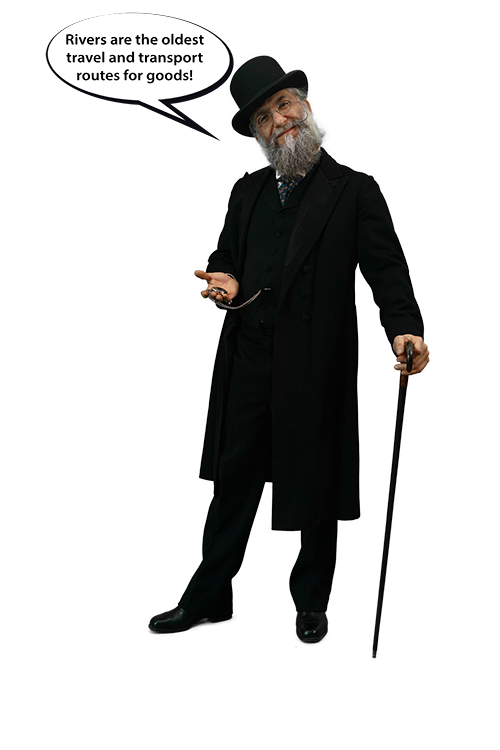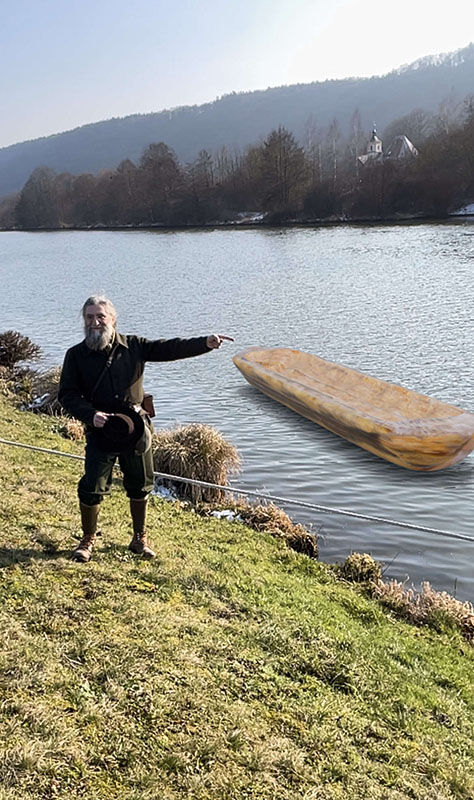Explore the 3D object displayed above at your location. Click on the button “IM RAUM ANSEHEN” and place the object on a flat surface at your location. The camera tries to identify the geometry of the room / landscape in order to display the 3D object there.


“Rivers are our oldest routes for travel and the transport of goods. They have provided opportunities for connections and networks across regions and continents. Explorers and armies, but also new ideas, fashions and religious beliefs made rapid progress along them – at least downstream. In time, especially with the help of animals such as donkeys, oxen and mules, boats could also be pulled upstream.
Early boats were simple structures – hollowed-out tree trunks and rafts tied together using willow branches.
Over time, boat and raft building techniques improved, making it possible to transport larger quantities of people, raw materials and other goods.
Rafts were used to transport bulk materials such as wood and charcoal but also highly prized goods such as amber, bronze, copper, tin, wine, salt and flint that were in demand over long distances. A raft is not as easy to steer as a boat and an advantage of the Altmühl is revealed in the river’s ancient name of ‘alcmona’, which means ‘still water’. You can see how slowly the river moves today!”


